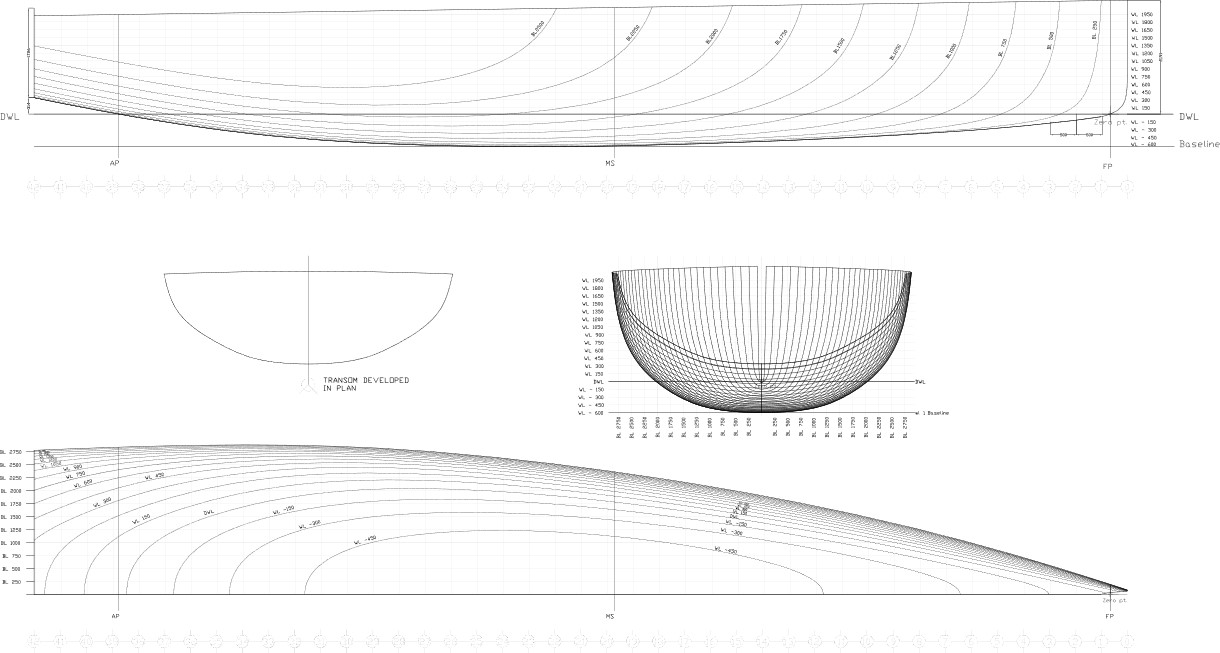
What Is a Displacement Hull?
There are two basic types of boat hulls—displacement and planing.
by Yixin Qi
Mon Sep 27 2021
#Knowledge
There are two basic types of boat hulls—displacement and planing. Sailing boats most of the time have displacement hulls. In the picture, we can see the hull line of the sailing boat made by Yixin in his sailing boat project. From the front view, we can see that the displacement hull has a shape like a bowl. Boats with displacement hulls move through the water by pushing the water aside and are designed to cut through the water with very little propulsion. If you lower a boat into the water, some of the water moves out of the way to adjust for the boat. If you could weigh that displaced water, you would find it equals the weight of the boat. That weight is the boat’s displacement. This is exactly Archimedes' principle. The displacement hull displaces the same amount of water when stationary or moving, it is supported by buoyancy and they are typically big, round, and bulbous. Generally, displacement hulls are slow, as they are not designed to naturally plan, the speed at which they move through the water is limited by its waterline length. It wouldn’t make any difference of the power of the engine you put in a displacement hull they are not designed to plan. As a very general rule, the maximum speed of any displacement hull--commonly called its hull speed--is governed by a simple formula: hull speed in knots equals 1.34 times the square root of the waterline length in feet (HS = 1.34 x √LWL) Boats with displacement hulls are limited to slower speeds. A round-bottomed hull shape acts as a displacement hull. Most large cruisers and most sailboats have displacement hulls, allowing them to travel more smoothly through the water. In the next article, we will talk about planning hull, which is more often seen in powerboats and motorboats. Ciao~